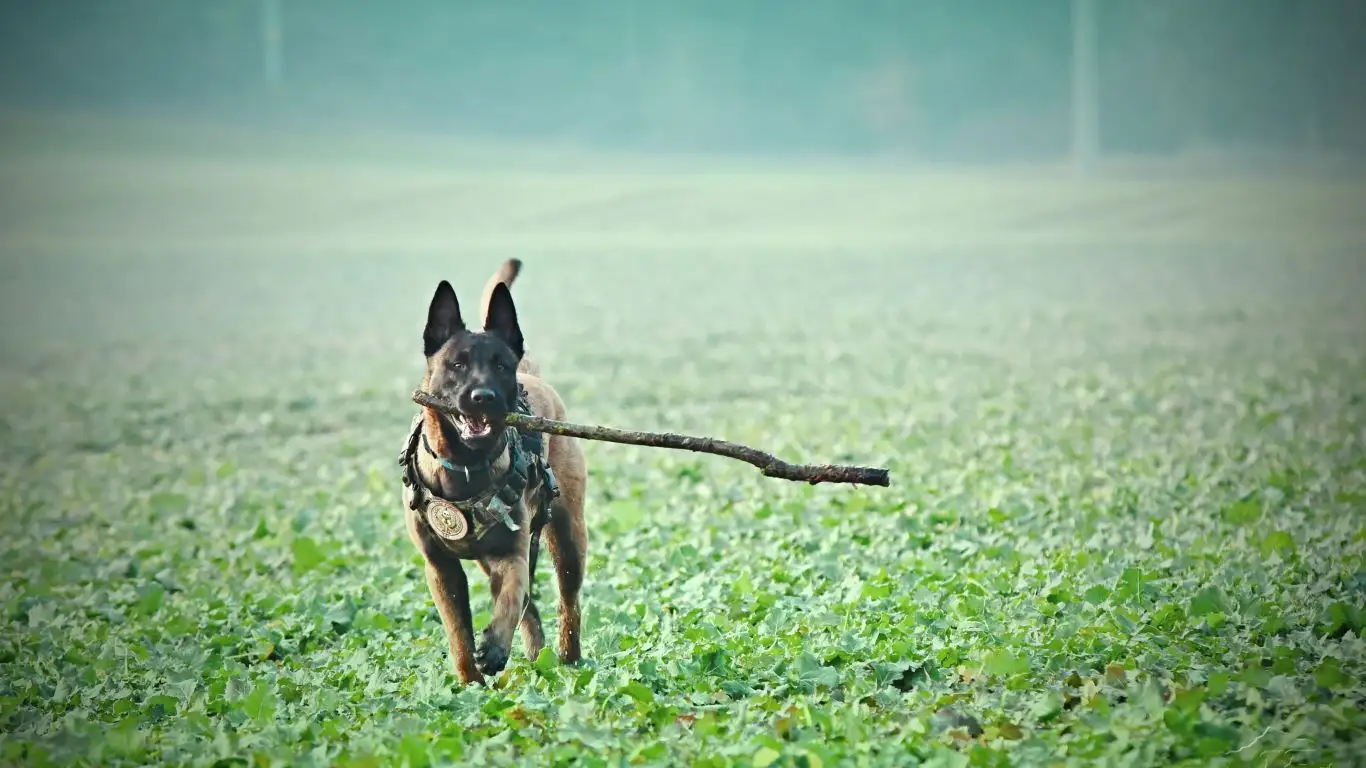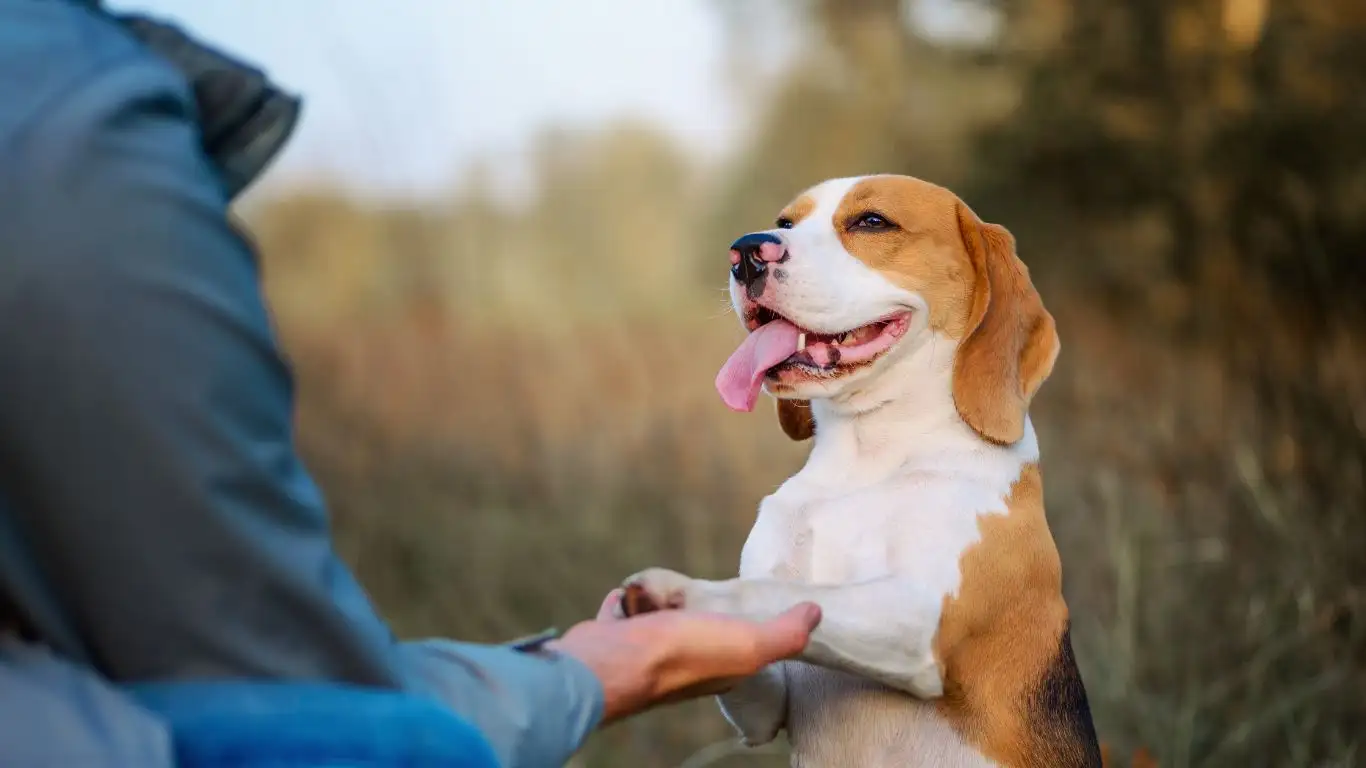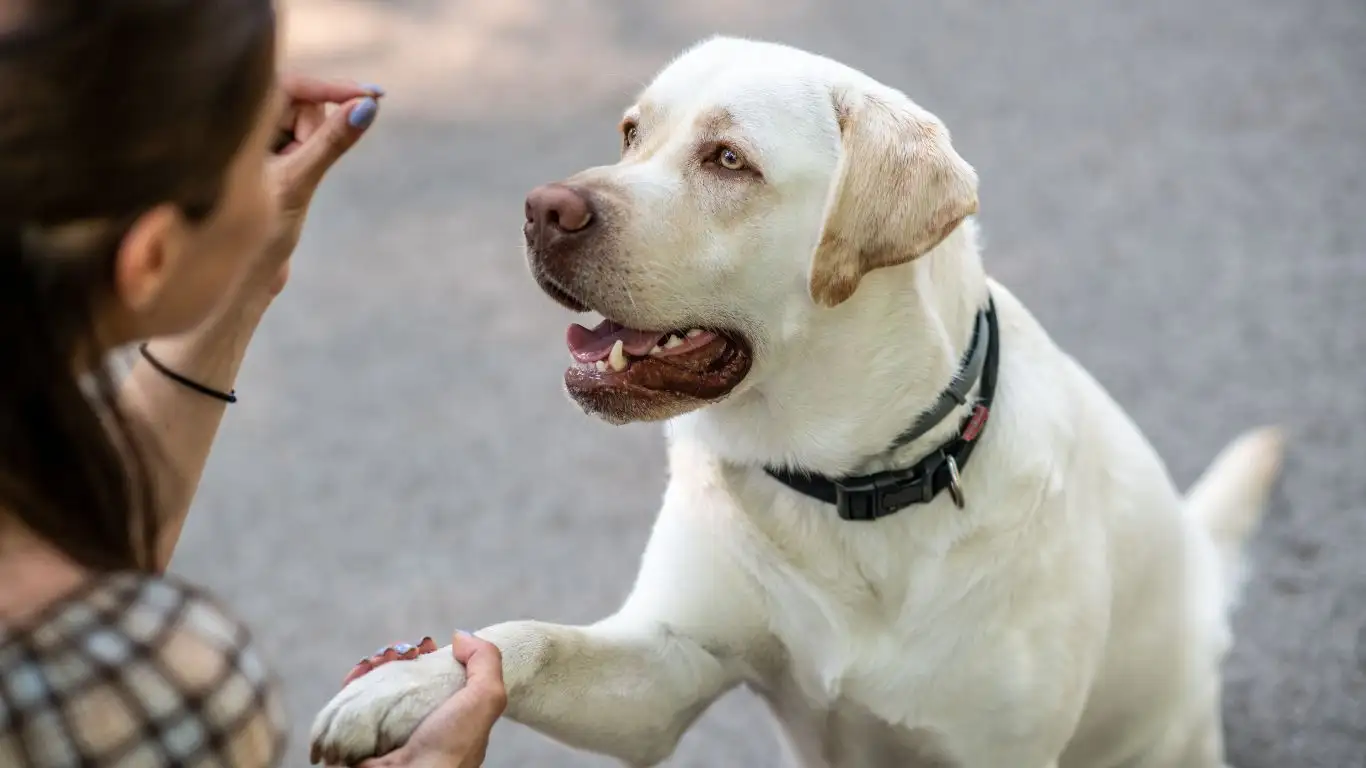Can Dogs Eat Kale Chips? Discover the Risks and Benefits for Your Pup
As a Canine-Assisted Therapy Trainer, I’m always asked about the safety and nutritional benefits of various foods for dogs. One question that often comes up is: *Can dogs eat kale chips?* It’s a great question because kale has gained popularity as a superfood for humans, but what about our furry companions? If you’re a dog parent, you want to make sure everything you feed your dog is safe and beneficial. I’ve had some experiences with dog owners giving their pets kale chips and other snacks, so let’s dive in and talk about whether kale chips are safe for your dog, what to watch out for, and how to include them in a dog’s diet in a healthy way.
What Are Kale Chips and Why Are They Popular?
First off, let’s talk about kale chips themselves. These crispy, crunchy snacks are a popular alternative to traditional chips for humans, thanks to their lower calorie count and higher nutritional value. Kale, a leafy green vegetable, is baked until crispy, often seasoned with salt or various spices. It’s loaded with vitamins and minerals, including Vitamin A, Vitamin K, and calcium, which is why people love adding it to their diets.

But just because something is healthy for humans doesn’t automatically mean it’s safe for dogs. In fact, some of the ingredients used to make kale chips might not be suitable for dogs. So, before offering your dog this popular snack, it’s important to understand both the benefits and potential risks of kale and kale chips for canines.
What You Need to Know About Kale
Kale is actually packed with a lot of nutrients, some of which are beneficial to dogs in small amounts. Kale contains high amounts of fiber, which can help with digestion, and antioxidants, which are great for reducing inflammation and improving overall health. But while kale is healthy for humans, there are a few considerations before offering it to your dog.
- Calcium Content: Kale contains calcium, which is excellent for building strong bones, but when consumed in large quantities, it could potentially cause kidney or bladder issues in some dogs, especially those predisposed to kidney stones.
- Oxalates: Kale also contains oxalates, which can contribute to kidney stone formation if consumed in large amounts. This is a big consideration for dogs that are prone to urinary tract problems.
- Fiber: Kale’s high fiber content can be beneficial for your dog’s digestion, but too much fiber might lead to an upset stomach, bloating, or diarrhea.
Can Dogs Eat Kale Chips? The Good and the Bad
Now, let’s get to the heart of the question: *Can dogs eat kale chips?* The short answer is: it depends. While the kale itself is not inherently harmful to dogs, there are other factors to consider with kale chips.

Most kale chips are made with seasonings like salt, oil, and spices—none of which are particularly great for dogs. Let’s break it down:
- Salt: Kale chips often have added salt to enhance their flavor. Too much salt can be dangerous for dogs, leading to sodium ion poisoning, which can cause vomiting, diarrhea, tremors, or even seizures. The risk of salt poisoning is higher if the dog eats a large quantity of kale chips.
- Spices: Many kale chip recipes include spices like garlic, onion powder, or chili powder—ingredients that are toxic to dogs. Garlic and onions, even in small amounts, can lead to damage to a dog’s red blood cells, which may cause anemia.
- Oil: While not toxic in small amounts, the oil used to make kale chips is usually high in fat. Excessive fat in a dog’s diet can lead to pancreatitis, which is a serious and painful condition.
Why Should You Be Cautious About Giving Kale Chips to Dogs?
It’s easy to think of kale chips as just a healthy snack for your dog, but there are a few reasons why you should approach this with caution. Even though kale itself has health benefits, the added ingredients in kale chips can be problematic. As a Canine-Assisted Therapy Trainer, I’ve seen dogs have reactions to seemingly harmless treats, which is why it’s always best to stick to dog-friendly alternatives. Plus, some dogs have sensitive stomachs or allergies, so a small treat like kale chips might cause more harm than good.

Let’s be clear, kale chips might not be the best snack choice for your dog, but this doesn’t mean kale itself is off the table. If you want to share some healthy vegetables with your furry friend, there are better ways to include kale in their diet, and we’ll explore that next.
Safe Ways to Include Kale in Your Dog’s Diet
So, if kale chips are a no-go, how can you safely share the health benefits of kale with your dog? As a Canine-Assisted Therapy Trainer, I often recommend alternatives that allow dog owners to add nutritious foods to their dogs’ diets without compromising their health. Thankfully, there are some safe ways to give your dog a little kale without all the risks associated with kale chips. Let’s dive into these options.
Steamed Kale: A Simple and Safe Option
One of the safest ways to feed your dog kale is to steam it. Steaming kale helps preserve the nutrients while making it easier to digest for your dog. This is because the heat breaks down some of the tough fibers that can cause stomach issues, making it gentler on your dog’s digestive system.

When you prepare steamed kale for your dog, be sure to skip the seasonings and oil. Simply rinse the kale well, remove any tough stems, and steam it until it’s soft. You can serve it in small, bite-sized pieces, mixing it in with their regular food to add some extra nutrients. It’s also a great way to introduce new flavors and textures to your dog’s meals, especially if they’re on a limited diet or have a sensitive stomach.
How Much Kale Is Too Much for Dogs?
While kale has some great benefits, it’s important to remember that everything in moderation is key—especially when it comes to our dogs. Too much kale, even when prepared properly, can lead to digestive issues like bloating or gas. As I’ve seen in my work as a Canine-Assisted Therapy Trainer, some dogs can handle new foods like kale with no problem, while others might experience discomfort if given too much at once.
The general rule of thumb is to introduce kale slowly into your dog’s diet and keep the portions small. A little bit of kale goes a long way, and a few small pieces mixed into their food should be more than enough to offer them the nutritional benefits. If you notice any signs of gastrointestinal upset, such as diarrhea or vomiting, it’s best to stop feeding them kale and consult your vet.
Benefits of Kale for Dogs
When given in moderation and prepared correctly, kale can be a great source of nutrients for your dog. Here are just a few of the benefits:
- Rich in Antioxidants: Kale is full of antioxidants, which help fight inflammation and support your dog’s immune system. It’s an excellent addition for older dogs or dogs with joint issues, as it can help reduce inflammation and promote overall health.
- Vitamin A for Healthy Vision: Kale contains high levels of Vitamin A, which is essential for maintaining healthy vision. This is especially important for senior dogs, as they may be more prone to vision problems as they age.
- Fiber for Digestive Health: Kale’s fiber content can promote healthy digestion, making it a great addition for dogs with occasional constipation or digestive issues. It can also support a healthy gut and improve stool quality.
What About Kale Chips for Dogs with Special Dietary Needs?
If you have a dog with special dietary needs or sensitivities, kale chips might still pose a risk due to the added ingredients like salt, oil, and spices. For dogs with health conditions like kidney disease or pancreatitis, even a small amount of these ingredients can lead to serious problems. That’s why it’s so important to be cautious and consult your vet before giving your dog any human snacks, including kale chips.

For dogs with specific health concerns, there are alternative snacks and treats that might be more appropriate. For example, if your dog has a sensitive stomach, you might want to opt for a dog-friendly vegetable like carrots or sweet potatoes, which are easy on their digestive system and lower in fiber.
Are There Any Alternatives to Kale Chips?
If you’re looking for a crunchy snack for your dog that’s healthier than traditional chips, you can try making your own dog-friendly treats at home. There are many recipes online for homemade dog treats that use safe ingredients like sweet potatoes, pumpkin, or even oats. These snacks can provide your dog with the satisfying crunch they love without the risk of toxic seasonings or unhealthy fats.
Another great option is to simply stick with fresh vegetables. Many dogs enjoy raw or lightly cooked vegetables like carrots, green beans, or peas. These options provide plenty of vitamins and fiber without the added risk of ingredients that could harm your dog’s health.

Making healthy choices for your dog is part of being a responsible pet owner. By paying attention to what goes into your dog’s diet, you can ensure that they stay healthy, happy, and safe. When in doubt, always consult your vet to find the best options for your dog’s specific needs.
How to Safely Introduce New Foods Like Kale to Your Dog’s Diet
As a Canine-Assisted Therapy Trainer, one of the most common concerns I hear from dog owners is how to safely introduce new foods into their pets’ diets. Whether it’s a new vegetable like kale or a different type of treat, the process should always be done carefully. When it comes to adding kale (or any new food) to your dog’s meals, moderation and slow introduction are key.
First and foremost, always start with small amounts. For example, if you’re adding steamed kale, try mixing just a teaspoon or two into your dog’s regular food. Watch for any signs of digestive upset—things like bloating, diarrhea, or vomiting. If your dog seems to tolerate it well, you can slowly increase the portion size over a few days. If you see any negative reactions, simply stop giving the kale and consult your vet if necessary.
Signs of Food Sensitivities to Watch For
Just like people, dogs can have food sensitivities, and it’s important to know the signs. I’ve worked with many dogs who had reactions to foods that might seem harmless at first, so it’s always a good idea to keep an eye out. Some signs of food sensitivities or allergies include:
- Itchy skin or rashes
- Excessive licking or chewing at paws
- Ear infections or head shaking
- Digestive issues like vomiting, diarrhea, or gas
- Changes in behavior, like lethargy or irritability
If you notice any of these symptoms, it’s a good idea to take a step back from feeding kale (or any other new food) and consult your veterinarian for further advice. Your vet can help determine whether the symptoms are related to a food sensitivity or something else.
Alternatives to Kale: Healthy Veggies Your Dog Will Love
If you’re unsure about adding kale to your dog’s diet, or if your dog has a sensitivity to it, there are plenty of other vegetables that can offer similar nutritional benefits without the potential risks. As I’ve mentioned in my training, variety is essential to keeping your dog’s diet interesting and balanced. Here are a few safe, healthy alternatives to kale that many dogs love:

- Carrots: These are low in calories and high in fiber, making them a perfect snack for dogs. Plus, they’re great for your dog’s teeth, as chewing on them helps clean their teeth naturally.
- Sweet Potatoes: Rich in fiber, vitamins A and C, and antioxidants, sweet potatoes are a great addition to any dog’s diet. They’re also naturally sweet, which many dogs find appealing.
- Green Beans: These are another excellent low-calorie snack for dogs. They’re full of vitamins and fiber, and many dogs love their crunchy texture. They also help with weight management if you have a dog who’s trying to shed a few pounds.
- Pumpkin: If your dog has digestive issues, pumpkin can be a game-changer. It’s great for both constipation and diarrhea and provides a natural source of fiber. Plus, dogs seem to love the taste!
- Peas: Peas are full of vitamins and antioxidants, making them a nutritious option for dogs. Whether fresh or frozen, they’re easy to prepare and are a great addition to your dog’s meal plan.
Just like with kale, it’s important to introduce these new vegetables slowly and watch for any signs of digestive upset. Always serve them in small, bite-sized pieces to avoid choking hazards, and be sure to cook or steam any vegetables that could be tough for your dog to digest, such as sweet potatoes or carrots.
The Bottom Line: Can Dogs Eat Kale Chips?
So, can dogs eat kale chips? The answer, in short, is no. While kale itself is healthy for dogs when prepared properly, kale chips—especially those made with added salt, oil, and spices—are not safe for dogs. The ingredients in kale chips can cause digestive issues, upset stomachs, or even toxicity in some cases.
Instead of offering your dog kale chips, consider steaming kale or offering other dog-friendly vegetables like carrots, sweet potatoes, or green beans. These alternatives are just as nutritious and much safer for your dog’s health. And remember, when introducing new foods to your dog’s diet, always do so gradually and monitor for any adverse reactions.
Consulting Your Vet for the Best Advice
As always, when it comes to your dog’s health and diet, it’s best to consult with your veterinarian. They know your dog’s individual health needs and can offer personalized advice on what foods are best for them. If you’re ever unsure about a food or treat, your vet will help guide you on the safest options for your furry friend.

References
Disclaimer
The information provided in this article is for informational purposes only and is not intended as a substitute for professional veterinary advice. Always consult with your veterinarian before making any changes to your dog’s diet or introducing new foods. Individual dogs may have different dietary needs, and your vet can provide personalized recommendations based on your dog’s health and specific requirements.






